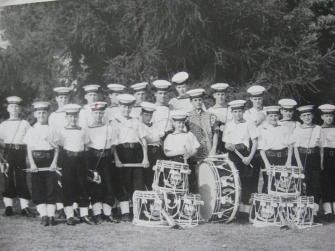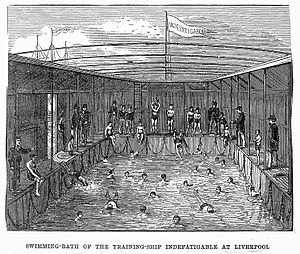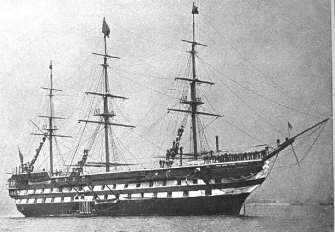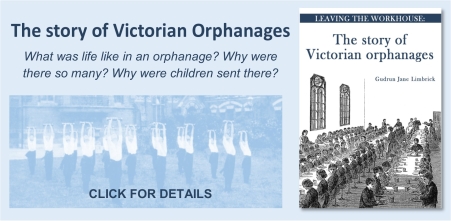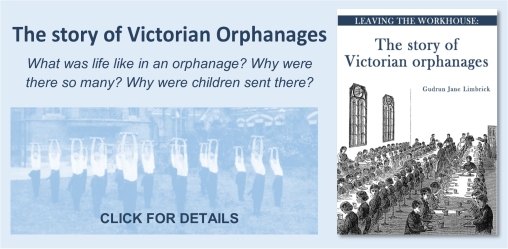Seamen's Orphans' Homes
and Orphanages
There was a time when much of the protection of our country was carried out by the navy.
Before big battles by air and bombs, fighting was at sea. Along with exploration and trading and, of course, fi.
The problem with a dependence on the sea is that it was highly dangerous and many sailors lost their lives.
Recognising this, several orphanages were established for those whose fathers lost their lives at sea, generally while in the Royal or Merchant Navy.
BRIXHAM
HULL
LIVERPOOL
LONDON
PORTSMOUTH
BRIXHAM
British Seamen’s Orphan Home
1863-1988
Berryhead Road, Brixham, South Devon
For boys whose sailor fathers had died. Most of the boys went on to join the Navy themselves.
Photo - 1962
The band at the British Seamen's Orphan Home, 1962
Photo by Nigwen. This file is licensed under the Creative Commons Attribution-Share Alike 3.0 Unported license.
HULL
Hull Seamen’s and General Orphan Asylum
1866-1985
Spring Bank, Hull
Moved to Hesslewood Hall 1921
.
LIVERPOOL
The Liverpool Seamen's Orphan Institution
1876-1945
Orphan Drive, Newsham Park, Liverpool
A House and School for the Training and Education of the Orphan Children of Liverpool Seamen
Not all seamen's orphan homes were on land. Some were on Training Ships.
The Indefatigable
For Schooling and Training as Seamen the Orphans of Sailors and Other Destitute Children. Most of the boys joined the navy as deck crew.
1864-1941
The Indefatigable was moored at the Slyne off Rock Ferry on the Mersey alongside HMS Conway, Akbar and Clarence (for more on these training ships, please visit our page on industrial schools.
During the second world war, the boys were sent to Anglesey where they continued their time on land.
https://wellcomeimages.org/indexplus/image/V0020037.html
This file is licensed under the Creative Commons Attribution 4.0 International license.
HMS Conway
1859-1953
Moored alongside the Indefatigable, HMS Conway had a remit to prepare boys to go to sea as apprentice officers. It is likely that, even in the early days, this school ship was not open to homeless boys and those from poorer families.
During the Second World War, HMS Conway sailed to Anglesey where life aboard continued for the boys in the comparative safety of North Wales.
In 1953, when on the way to a refit, HMS Conway ran aground and was destroyed.
HMS Conway. Source: WikiCommons
LONDON
Sailor ophan girls’ school
1829-1957
Rosslyn Hill, Hampstead
This was a large institution with accomodation for around 100 girls.The aims were the "maintenance, clothing, and education of orphan daughters of sailors and marines, and the providing of a home for them after leaving, when out of situations."
Royal Merchant Seamen’s Orphanage
1826-1961
Snaresbrook, London
We have a page dedicated to this orphanage here.
Royal Caledonian Asylum
1815-1966
Caledonian Road, Holloway
This was started by a group of individuals called the Highland Society in London tp provide for Scottish children in London who had been orphaned in the Napoleonic Wars. It's aims broadened as time went on to become the 'maintenance and education of children of soldiers sailors and marine'
It was first based in Cross Street, Hatton Garden – and moved in 1828 to Islington where it gave its name to the Caledonian Road.
In 1902, it moved to Bushey, Hertfordshire.
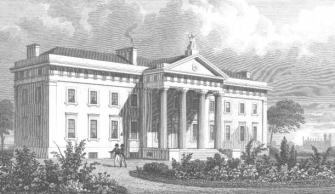
The Royal Caledonian Asylum in Islington
Source: WikiCommons
Royal Victoria Patriotic Asylum
1859-WW2
Wandsworth Common
Description: for Fatherless Daughters of Sailors, Soldiers and Marines
The aim of the orphanage was the ‘Education and Training of three hundred Orphan Daughters of Soldiers, Seamen and Marines who perished in the Russian War [Crimean War], and for those who hereafter may require like succour’.
As time passed, this was broadened to, in 1900, 'fatherless daughters of sailors, soldiers and marines'
The folloing quote abougt the orphanage is from the Royal Victoria Patriotic Buiding website www.rvpb.com/history
"Life for the orphans was extremely harsh. Their work included pumping water by hand from an underground rainwater system in the rear courtyard up to the lead-lined slate water tanks in the towers. They had to launder all the clothes. Their heads were shaved to discourage head lice and they were made to assemble in the courtyards every morning to be hosed down with cold water. The patented warm air heating system failed to work. Fireplaces were added to the staff rooms but no heating was provided to the dormitories. The orphanage was nearly closed down after a scandal involving physical and sexual abuse by the Rector and the death of one of the orphans. Her ghost still allegedly roams the cloisters of the north and south courtyards."
PORTSMOUTH
The Royal Seamen and Marines’ Orphan’s School and Female Orphan Home
1834
St Gerge’s Square, Portsea – moved to Lion Terrace in 1851
The day-school was for boys, the orphanage for girls. Most girls went into domestic service, most boys went into the navy.
In 1894 the day school closed. Boys went to Swanley, Kent while the girls' home stayed in Portsmouth.
1864 a home for little boys oened at Coombe’s Croft House, Tottenham Cout Road which, in 1867, moved to Farningham, Kent
In 1918, Canada Home, the infants school of the Royal Seamen and Marines' School and Female Orphan Home opened in Clarendon Road, Southsea.
Seamen and Marines' Children’s school
Bath Square, Portsmouth
1825
Seamen’s Orphan Home
Ordnance Road, Portsmouth
1836

